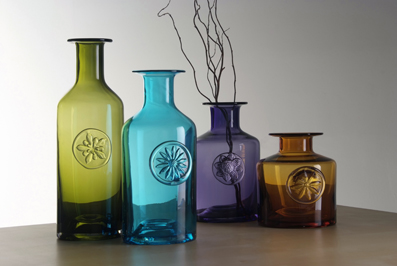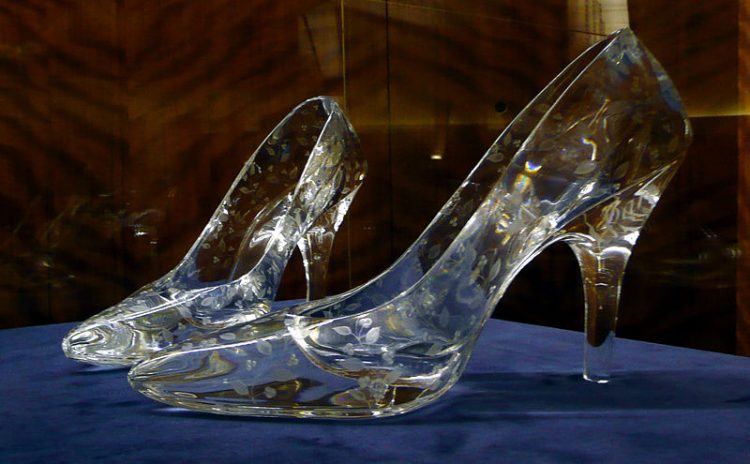 Far too many of the great glass houses of yore have been lost to us (or exist now only in a much reduced capacity), with even giants like Waterford Wedgwood stumbling into receivership, owing to the global recession that occurred in the early 2000s. As such, the existence of an enduring success story within the world of art glass stands out like a shining beacon—and out of all of these beacons, Dartington Crystal shines particularly brightly. Not only is this firm still very much in business, Dartington glass is still produced within the UK, keeping true to tradition and providing employment to 150 people in the small town of Torrington in Devon.
Far too many of the great glass houses of yore have been lost to us (or exist now only in a much reduced capacity), with even giants like Waterford Wedgwood stumbling into receivership, owing to the global recession that occurred in the early 2000s. As such, the existence of an enduring success story within the world of art glass stands out like a shining beacon—and out of all of these beacons, Dartington Crystal shines particularly brightly. Not only is this firm still very much in business, Dartington glass is still produced within the UK, keeping true to tradition and providing employment to 150 people in the small town of Torrington in Devon.
Dartington is one of only a few remaining large-scale producers of crystal and glass that resides in the UK (they do also source some of their glassware from European sources, but only in a very selective manner). In addition to making their own glass, Dartington now also owns and markets Caithness Glass and Royal Brierley Crystal, two world-renowned historic names (along with distributing John Beswick ceramic character sculptures). It is evident that Dartington is therefore no relic of a glass house; hanging on by a thread, but rather a true Cinderella story, a tale of hope and the triumph of beauty in a harsh world (fittingly enough, the company is known for having made a set of exquisite glass slippers).
This success story all began in the same place it continues on today—Torrington—and was born of romance and altruism. Back in the 1920s, a wealthy American heiress married a Yorkshire man, and the couple, Dorothy and Leonard Elmhurst, settled in the peaceful countryside of Devon. Once there, the newlyweds hatched a plan to build up the area around them; to that end, they founded the Dartington Hall Trust. Based at Dartington, near Totnes, South Devon, the Trust was built in the hopes of creating economic regeneration in the isolated, and then somewhat depressed, rural area. The Elmhursts planned to establish businesses, education, the arts, and country crafts as sources of revenue and pride in the region.

It was not long before the Dartington Hall Trust became an epicentre of bustling local activity, featuring a diverse range of industries—from cheese making to carpentry, farming, forestry, research and education.
Still, as the 1960s got into full swing—that time of wild living, vivid youth, and challenging new ideas—it became evident that in the north of the county, young people were still leaving in droves, pushed away by lacklustre employment opportunities and boredom with rural life. This creative era demanded a focus on the arts, so the Trust decided to give such to the youth of North Devon in the form of a glassworks.
Dartington Glass was therefore born, and no mediocre glassworks was it to be. The leading light at Dartington Glass was Frank Thower MBE, who was a self-taught glassware designer and ceramic salesman who had been working for Portmeirion Pottery, before joining Dartington as chief designer and sales director. It was Frank’s recommendation to recruit Swedish glass manufacturer Eskil Vilhemson to be Dartington’s managing director. Vilhemson was then charged with building a team of experts, hiring in Scandinavian glass blowers who came to Devon to teach the locals how to master this unique and challenging art.
In 1967, the year the factory officially opened, it employed just 35 people—a lull that was not to last for more than a few years. British designers soon got on board, and by the 1970s, the demand for Dartington glass had far outstripped its production, so the small factory had to be expanded. Then, during the 1980s, the renowned British firm Waterford Wedgwood invested in Dartington, allowing it to expand its operations even further.
The rest, as they say, is history; today, Dartington largely focuses on the production of fine crystal, and as such, is officially known as Dartington Crystal, rather than Dartington Glass. It’s the go-to manufacturer of fine British crystal for those who stand staunchly by the proud history of quality glass being made entirely within the UK, and is best known for its exquisite Scandinavian-influenced Sharon, Exmoor, and Dimple designs. Dartington remains a living legend largely owing to its willingness to experiment—embracing contemporary designs even as it honours traditional techniques and localism—and its provision of options in terms of materials, design, style, and cost. The latter ensures that the company appeals both to collectors and the average consumer, an ideal recipe for relevance, sustainability, and pride.

No mention of Frank Thrower MBE? Shame on you!
His designs were what made Dartington Glass such a success, Swedish design inspired the designs, and Frank worked with John Wuidart importing glass from Sweden, before he was asked to join Dartington Glass. there was also a strong association with Portmeirion Potterythat you ignore, who suggested to the Dartington Hall Trustees that they set up a glass factory and not a pottery!
Hi Stephen. Good point about Frank Thrower MBE, we was the man who made it all happen. I have edited it to include him, but I must get round to adding a lot more detail, hopefully sometime soon.
Under the leadership of Frank, his sales manager Peter Robinson and ledgendry sales team Dartington Glass was the name that all on the trade revered. It really is sad that very little is mentioned of those days in the history of the company.
Victor Mann.
Hi Victor
We would be delighted to add extra information to this blog. It can grow over time like our other blogs about glass companies where people add their own stories and anecdotes.
Please do write your own stories here and we would be delighted to publish them. Thank you!
Kind regards
Barnaby Kirsen
Boha Glass Ltd